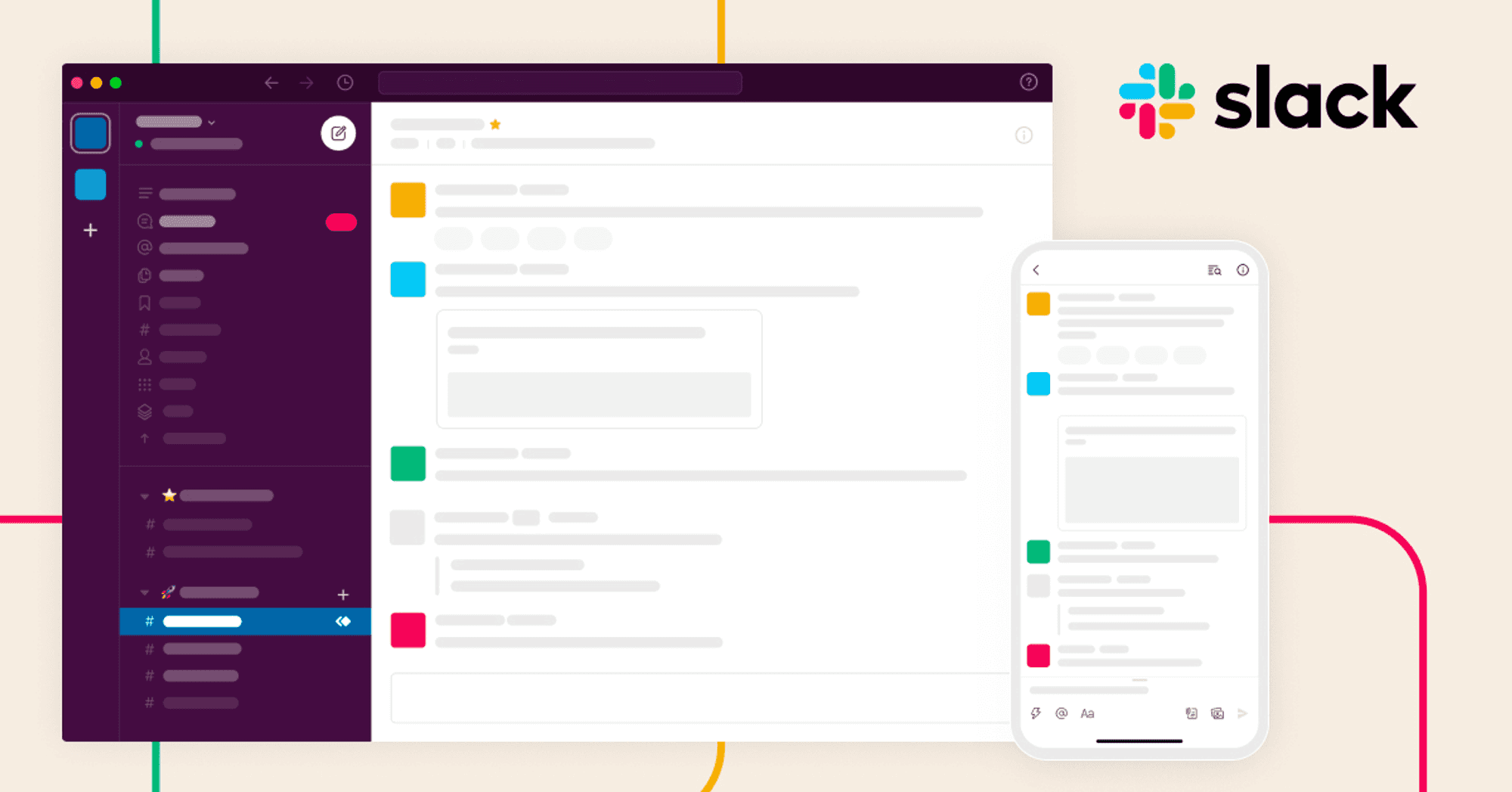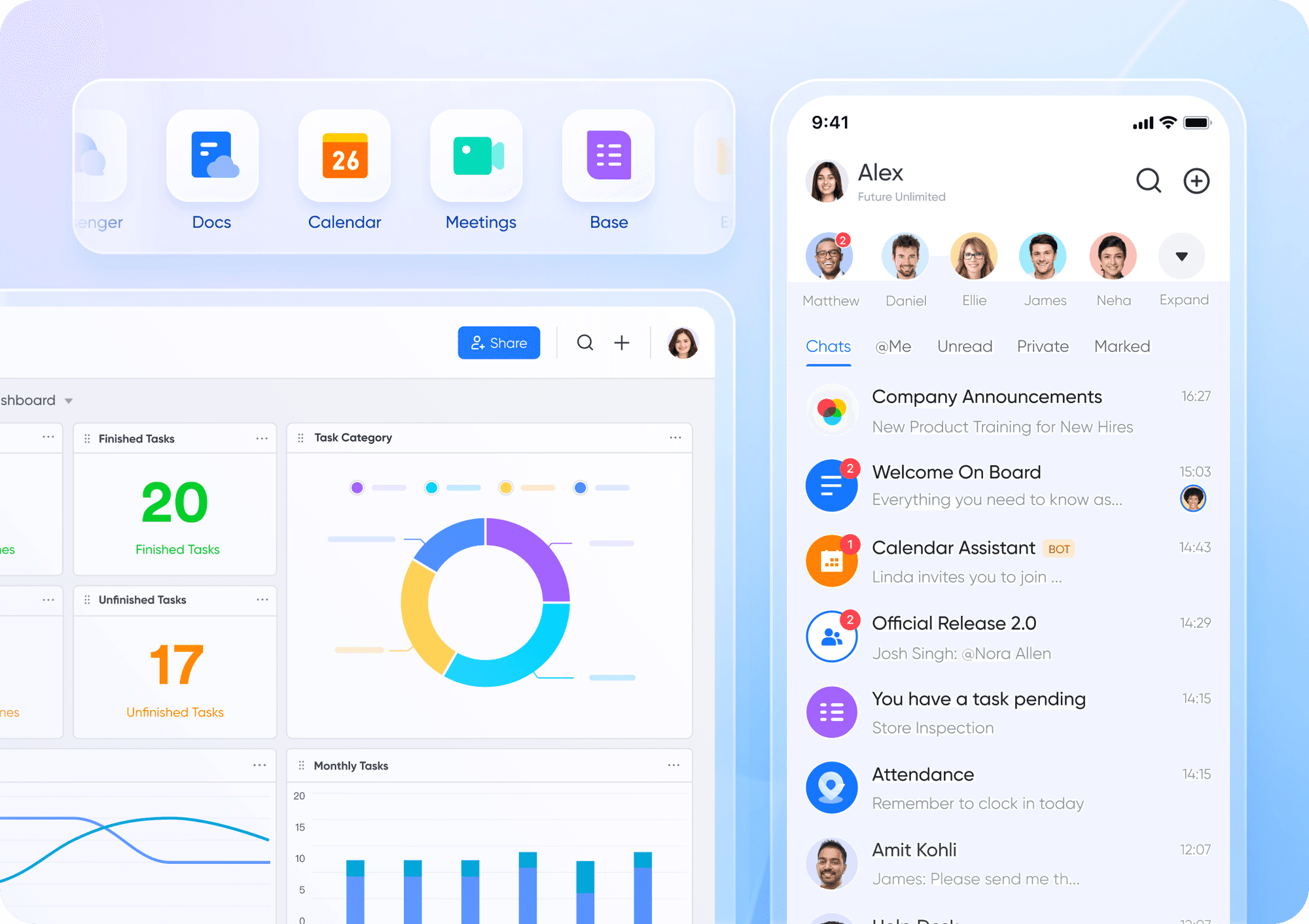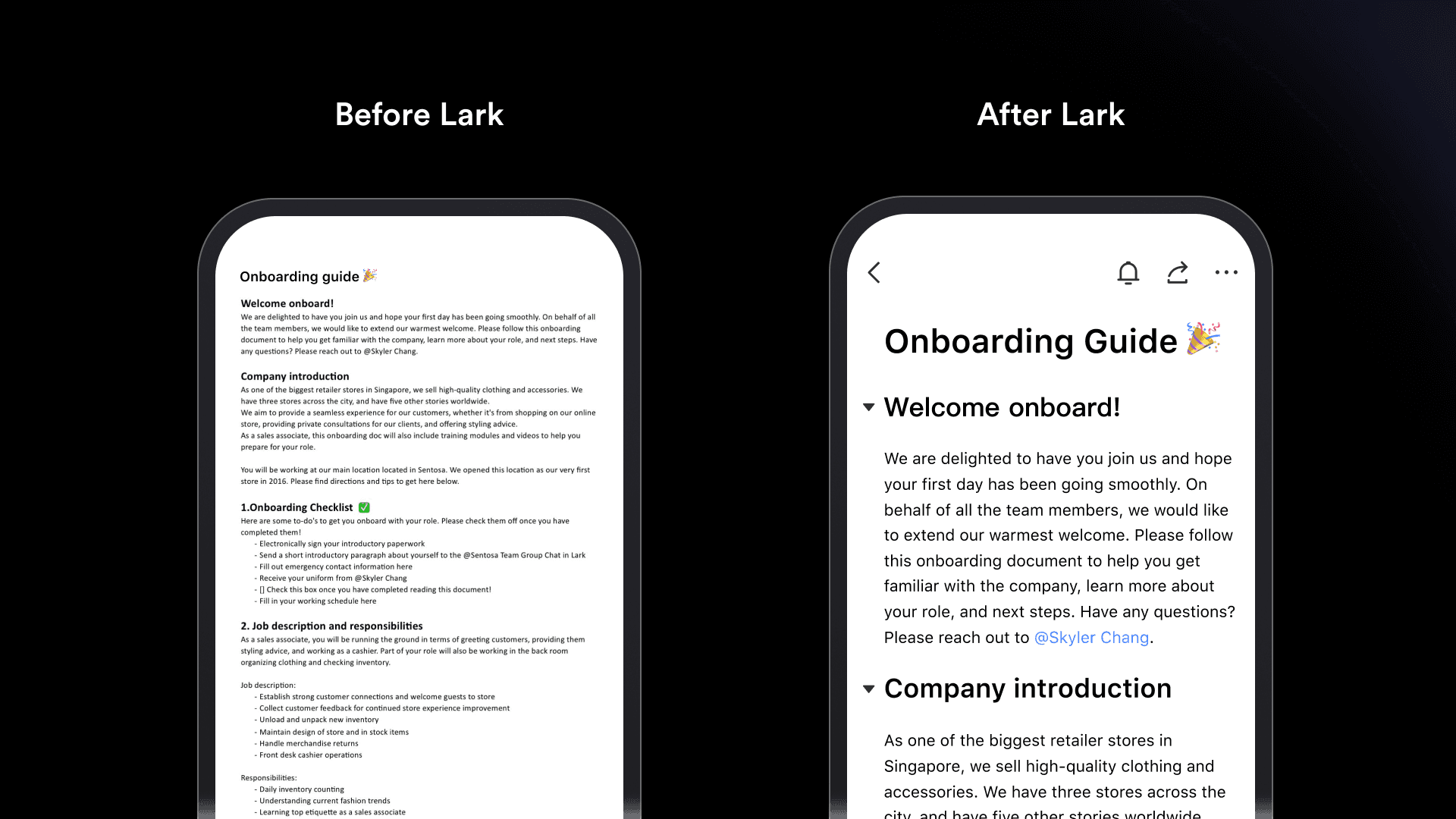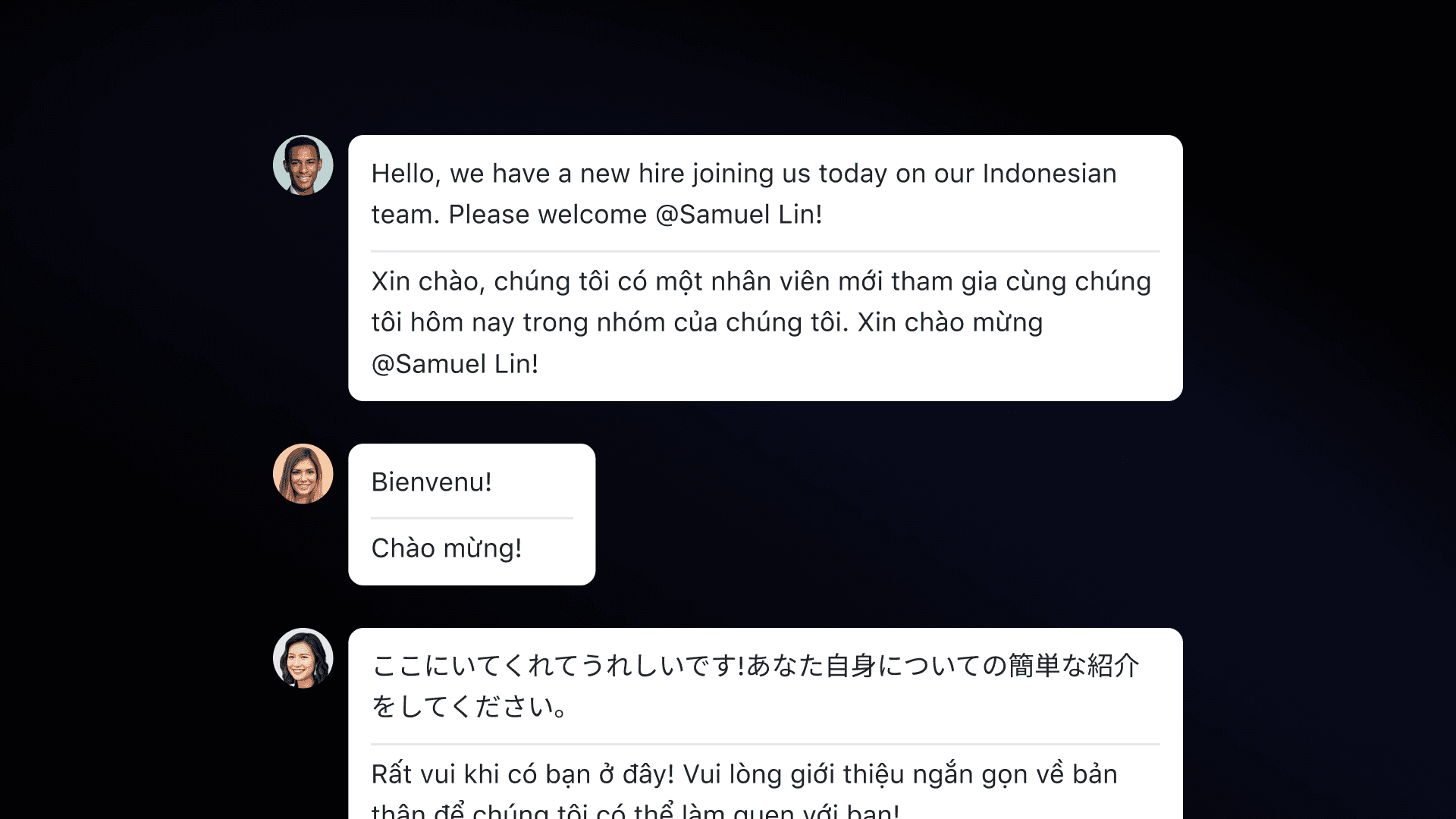Effective business communication is essential for all industries and organizations. According to a McKinsey report, 66% of employees expect collaboration tools to make their daily tasks project-oriented, and 72% expect these tools to elevate the team's self-organization ability. These trends underline the growing importance of collaboration tools.
While Slack has been one of the most used collaboration tools at work, it is essential to check on some Slack alternatives and see which one fits your needs best. These alternatives are able to help solve your concerns over your tool stack's ability to scale, security and safety, pricing, ease of use, and more. So, let's begin!
Understanding Slack

Slack's interface. Source: Slack.com
Slack serves as a modern-day beacon for team communication and collaboration. Envision a digital venue where discussions unfold, decisions take shape, and information is within arm's reach. This platform is tailored for businesses across the spectrum, acting as a common meeting ground for teams to share ideas and propel projects forward.
Exploring its features:
Channels: Slack channels are focused project spaces that facilitate a shared perspective on ongoing work. They ensure everyone is in sync and provide a seamless avenue for live voice conversations via Slack Huddles.
Pinning Messages and Document Management: Pinning messages or documents to channels enhances visibility around priorities. Moreover, integrations with file management platforms like Google Drive and Dropbox Paper streamline document tracking and sharing.
Shared Channels Across Workspaces: Collaborate not just within your organization but also with external entities, establishing a direct communication line across different Slack workspaces.
Customization and Navigation: Slack offers a range of customization options for a tailored user experience, from managing sidebar preferences to quick navigation between channels using keyboard shortcuts.
Integrations and Workflow Builder: Slack provides a wide range of apps and integrations, allowing it to connect with other services and extend its functionality. The Workflow Builder feature enables the creation of automated workflows, enhancing process efficiency.
Despite its robust feature set, users might run into challenges in these areas:
Integration Dependency: While Slack's integration capabilities are a strength, they can also be seen as a limitation due to the additional setup, IT resources, and maintenance required.
Not for Real-time Collaboration: Slack Huddles can enable quick discussions, but longer and more formal meetings with internal and external stakeholders may require a separate conferencing software like Zoom.
File Management and Sharing: Although Slack supports file sharing, its file management capabilities may not match dedicated document management systems, potentially leading to a fragmented document storage system, especially for teams handling a large volume of files.
Pricing: Slack can be costly, particularly for larger teams or organizations, which could pose a financial barrier for smaller companies or startups with limited budgets.
Why and how you should consider a Slack alternative
Why are organizations considering alternatives to Slack?
The hidden costs and challenges of using Slack and email in the workplace can be astonishing. Time management and analytics app RescueTime found out that Slack and email cost organizations an average of $28,209 per employee every year (source). Among paid Slack customers, users spend over 9 hours per working day connected to Slack, with 90 minutes of active usage, leading to 5 billion weekly actions.
But here's the catch - this intense usage could be quietly eating into your team's efficiency and your organization's wallet:
Counting the Costs: According to RescueTime, about one-third of this time is spent on Slack alone, which is roughly $9,500 per employee every year. Imagine that cost multiplied across your entire team.
The "Ping" Dilemma: Ever noticed how that Slack notification can pull you away from a great idea? The team can spend so much time responding to those "pings" that it might be interrupting our best deep-thinking moments.
The Juggling: This one's a bit of a mind-boggler. Our teams are flipping between screens or tasks every 40 seconds, and guess what? Each time we switch, we're losing about 23 minutes to get our focus back on track, as per Harvard Business Review. That's a lot of lost productivity!
While Slack is a great tool for many to stay connected at work, it's essential to balance its use with focused, deep work sessions to improve both productivity and costs.
What to consider when choosing a Slack alternative?
Selecting an alternative to Slack requires a thoughtful evaluation of several factors to ensure the new platform aligns with your team’s needs. Here are some criteria to consider:
Centralized Workspace: Look for a platform that centralizes communication, collaboration, and work management. This helps significantly reduce app toggling and context switching, thereby improving productivity for employees.
Ease of Use: An intuitive interface with a minimal learning curve will ensure a smooth transition. Switching to a new tool is no easy task, and you can only maximize your investment by having everyone fully utilize the tool for their work needs.
Integration Capabilities: The ability to integrate with other business tools is crucial. Often, your business might already be using specialty software, such as a POS system or a business intelligence platform.
Cost-effectiveness: Affordability without compromising essential features is key. As your organization grows, you want a tool that can scale with you while maintaining reasonable costs.
Global Collaboration: Features like real-time translation, time-zone checking, and meeting recordings are invaluable for teams across different geographies and languages. This helps reduce late meetings, time wasted on translations, and unreasonable schedules, while keeping the business moving forward.
1. Lark for productive, organized work communication
Ideal for teams and companies seeking a centralized workspace to enhance productivity and collaboration, Lark offers a unified platform for accessing all work-related resources. This includes Lark Messenger, an instant messaging module within Lark that allows teams to connect, converse, and collaborate without leaving the chat feed.
Lark Messenger, the instant chat module within Lark, acts as the center of collaboration, allowing you to connect with any team members instantly and take action on the next steps directly.
Whether it's booking a meeting with the group, Reading important documents and tables, or receiving and opening automatic notifications across Lark, teams can do so without switching to different apps by accessing them directly within the chat feed on Lark.
Communicate clearly and effectively: Easily locate anyone in your company by searching their names. Create well-formatted messages using bullets, screenshots, or screen recordings. React to messages using emojis or by replying in threads. You also have the option to directly share emails, meeting invites, and more into chats.

Build and engage with your communities easily: Create topic groups within Lark to encourage your internal or external communities to share ideas and engage in meaningful discussions. You can create, reply to, or forward different topics. Control the posting permissions to ensure optimal engagement and content moderation.
Collaborate with full context: Access full chat histories when added to a new group to get a sense of what's happening. Pin important documents, Base dashboards, announcements, and more for immediate access and context. Keep conversations organized and focused by replying in threads.
Act on to-dos immediately in the chat feed: Receive notifications on document comments, data updates in Base, approval requests, and more in your chat feed. Easily view and respond to incoming inquiries without having to leave the chat feed.

In addition, Lark Messenger comes in handy when teams are working across time zones, languages, and cultures:
Communicate in your preferred language: Working with global teams that speak multiple languages? Utilize translate-as-you-type and auto-translation in Messenger to communicate fluently while still using your preferred language.

Send messages at the right time: Consider time zones and timeliness, and ensure that your message reaches your colleagues at the perfect timing by scheduling it to be sent at a designated time.
Why Lark?
Truly all-in-one: Lark offers a comprehensive suite of tools that combines personal and group chat, video conferencing, online documents, project management, business workflows, approvals, business email, calendars, attendance, and more. By consolidating these features into a single platform, Lark eliminates the need to switch between different apps, saving time and optimizing productivity. Additionally, Lark seamlessly integrates with existing business tools, enhancing their capabilities.

Mobile-first: Lark is designed with a mobile-first approach, ensuring a consistent user experience across desktop and mobile devices. With just a few taps on their phones, users can easily edit and comment on documents, join meetings, follow presentations, and complete tasks such as inspections and issue submissions. This mobile accessibility empowers frontline teams and busy business travelers to be productive without relying on laptops.

Customizable to every business: Lark provides highly customizable solutions that streamline workflows through automation and centralize business data. For example, Lark Base automates work processes like purchase order management, creator management, and inspection tracking. Additionally, Lark Approval enables businesses to create their own approval flows, simplifying the process with automatic reminders and easy approval on mobile devices. This level of customization ensures that Lark can adapt to the unique needs of any organization.

Power global collaboration: Lark overcomes different time zones, languages, and cultures. To overcome these barriers, Lark incorporates various solutions such as real-time translation in chats, documents, and meetings. This ensures that teams can understand each other without the need to learn a new language. Additionally, Lark provides time zone checkers and powerful Minutes solutions to eliminate the need for inconvenient meetings and allow colleagues to catch up during their respective working hours.

Lark offers a free plan for up to 50 users, which includes features such as business email, chat, video conferencing, project and task management, and more. Pro and Enterprise users have access to additional features such as extra storage, watermark capabilities, and increased automation runs, making collaboration even more efficient for larger teams.
2. Google Chat for quick, instant conversations

Google Chat has emerged as a robust alternative to Slack, especially for those already using the Google ecosystem. As part of the broader Google Workspace, it seamlessly integrates with tools like Gmail and Google Docs. This makes it a great choice for small to medium-sized enterprises. If your team is already using Google Workspace, transitioning to Google Chat should be a smooth process.
Some notable features of Google Chat that can replace Slack include:
Spaces for Team Collaboration: Similar to channels in Slack, Spaces in Google Chat help keep conversations organized around projects or topics.
Direct Messages: Like Slack, Google Chat allows for quick one-on-one or group conversations with teammates within the Google ecosystem, in addition to emails.
Google Workspace Integration: One significant advantage over Slack is that Google Chat is part of the Google Workspace, which allows for easier switching between Docs, Sheets, and Slides.
Apps for Enhanced Workflows: Google Chat provides a gallery of apps such as GIPHY, Asana, Trello, Salesforce, and more, allowing teams to receive notifications and enhance their workflows.
Google Chat is available for free with any Google account, and additional features are available with Google Workspace subscriptions, which provide a range of apps beyond chat to meet various business needs.
3. WhatsApp Business for customer engagement

WhatsApp is commonly used for personal chats, but its business app goes beyond personal conversations and becomes a viable alternative to Slack for direct and prompt business communication with customers.
Small businesses and local enterprises seeking a free Slack alternative to engage customers through responsive chatting will find WhatsApp Business app suitable. It provides a direct line to customers, fostering personal interactions and customer satisfaction.
As an alternative to Slack, WhatsApp Business offers a range of unique features that make it a suitable choice for external communication with customers, especially brick-and-mortar businesses.
List your business on WhatsApp: Showcase your business and attract new customers by creating virtual storefronts on WhatsApp. Send automated messages to new customers when they inquire.
Connect and interact with customers: Provide real-time customer support on WhatsApp to address feedback, concerns, and inquiries more efficiently. Set up quick replies for faster responses.
Automate responses when you are not (yet) online: Use greeting or away messages to assist customers outside of business hours, attending to their needs.
WhatsApp Business is free to start, and there is also a paid hosting option available for larger businesses. It offers a cost-effective alternative to Slack for businesses that require an application for addressing customer needs through chats.
4. Telegram for secure, simple communication
Telegram, known for its security and speed, paves its way as a robust alternative to Slack, especially for those valuing privacy and encryption in business communications. Companies and communities emphasizing secure, private communication will find Telegram a compelling alternative to Slack.
A haven for creating secure communities and groups, Telegram has a few features to replace what Slack can provide:
Secret chats: End-to-end encryption ensures secure conversations.
Cloud-based: Messages can be seamlessly accessed across different devices, enabling users to access chats from multiple devices.
Large Groups: Supports groups with up to 200,000 members.
Telegram is a free group chat app that promises no ads, subscription fees, or tracking, offering a budget-friendly option for secure communication.
5. Discord for community development and engagement

Originally designed for gamers, the Discord app has evolved into a popular hub for creating and joining communities. It serves as a platform for both casual conversations and serious workplace communication. Different servers, such as Midjourney, offer unique experiences for users.
Thanks to its stability and wide range of supported platforms, Discord has become the preferred communication tool for community enthusiasts. Companies looking to quickly build communities will find their fans on Discord, as it provides an engaging alternative to Slack. Additionally, Discord can be used for internal team communication, similar to Slack.
As a Slack alternative for communities, Discord offers several features to facilitate easy connection and engagement in channels:
Servers: Servers are spaces on Discord created by specific communities and friend groups, and anyone can start a server for free. Some of the most popular servers on Discord include Midjourney (text-to-image AI), Leonardo.AI, Blox Fruits (Roblox games), and more.
Voice Channels and Video Conferencing: Discord provides real-time voice and video communication tools, replacing Channels and Huddles on Slack. Additionally, Discord offers livestreaming functions for gamers to go live.
Customizable Roles and Permissions: Customize access based on your organizational hierarchy to organize your communities with both flexibility and structure.
Integration: Connect with various tools to extend functionality, similar to Slack integrations.
Discord offers a free version with the option to upgrade to two different Nitro plans, which provide additional quality during streaming, larger uploads, custom emojis, and more.
6. Microsoft Teams for office collaboration

Microsoft Teams, part of the Microsoft 365 suite, is a robust alternative to Slack, especially for businesses already using Microsoft's ecosystem. Beyond being a messaging app, Microsoft Teams seamlessly integrates with meetings and calls.
For companies deeply integrated with Microsoft's ecosystem, Teams is a natural choice. It offers better value with its pricing and includes Microsoft 365 apps in higher-tier subscriptions. Additionally, if there is a regular need for large-scale video conferencing, Teams excels with its ability to host video conferences or live events.
Key features of Microsoft Teams that make it a viable alternative to Slack include:
Professional Design: Encourages focused work discussions and reduces off-topic conversations.
One-on-one and Group Chats: Easily find and connect with the right contacts within the app through messaging.
Large-Scale Video Conferencing: Host video conferences or live events with hundreds of participants.
Integration with Microsoft 365: Seamlessly connect with other products within the Microsoft 365 suite to enhance productivity.
Microsoft Teams pricing starts at $4 per user per month, enabling teams to collaborate daily. To access additional products in the Microsoft 365 suite, such as OneDrive, Word, Excel, and PowerPoint, companies need to subscribe to higher-priced plans.
7. Rocket.Chat for secure messaging

Rocket.Chat is an open-source alternative to Slack that offers numerous possibilities for organizations interested in self-hosting their communication platforms. It is especially recognized for its on-premise deployment, which is a distinct difference from Slack's cloud-centric approach.
Companies with strict data privacy policies or those who prefer on-premise solutions may find Rocket.Chat to be a more suitable alternative to Slack. It is advantageous for organizations that lean towards open-source solutions, as it allows for a level of customization and control that Slack may not provide.
Some key features of Rocket.Chat as a replacement for Slack include:
Communication and collaboration tools: Rocket.Chat offers real-time messaging, voice, and video calls for seamless team communication. It also includes features like conversation archiving, team inbox, and customization options.
Enhanced security and customization: Rocket.Chat provides advanced security features such as 2-Factor Authentication, End-to-End encryption, and Single Sign-On (SSO). It also supports self-hosting for better control and privacy.
Self-hosted Solution: Unlike Slack, Rocket.Chat can be self-hosted, ensuring that data stays within your control.
In comparison to Slack, Rocket.Chat provides a simpler pricing structure. The Community version is available for free and includes unlimited group and one-on-one messaging, full messaging history, and all basic features.
For additional security options and unlimited push notifications, companies can choose to upgrade to the Enterprise version. Additionally, there is the option to add enterprise add-ons for support with migration, implementation consulting, and other services.
8. Pumble for budget-friendly work communication, and more

Pumble consolidates work chat, file sharing, and video conferencing into a simple yet effective platform for team collaboration. As businesses search for alternatives to Slack, Pumble emerges as a cost-effective choice, particularly appreciated by those on a budget.
Pumble is well-suited for small to mid-sized teams due to its pricing structure and feature set. With a design similar to Slack, transitioning teams would find it easy to adapt to Pumble, making it an appealing alternative.
Pumble offers a range of functions to effectively replace Slack for budget-conscious teams, including:
Channels, Direct Messages, and Threads: Pumble provides channels, direct messages, and threads, similar to Slack. Teams considering switching to Pumble from Slack will find the setup easy to adapt to.
Unlimited Chat Histories: Like Lark, Pumble also offers unlimited chat histories, allowing teams to catch up on conversations and gain full context.
Import from Slack: Pumble allows you to export your Slack public and private channels, messages, and users, and import them into Pumble for a seamless transition.
Pumble follows a straightforward pricing model, starting with a free basic plan and extending up to $6.99 per user per month (billed annually). This makes it a viable free alternative to Slack for budget-conscious teams. The free version of Pumble covers a broad spectrum of features suitable for light users, although there are some limitations such as the absence of group call capability and limited file sharing.
The realm of Slack alternatives is vast, extending beyond the aforementioned platforms. Here are some more options you might want to consider:
Zoom Team Chat: Zoom isn’t just for video calls; it has a team chat feature that facilitates text communication too.
Chanty: Chanty is designed to improve team productivity through high-quality messaging, video conferencing, and task management.
Basecamp: A project management tool at heart, Basecamp also offers robust chat capabilities.
Element: With a focus on privacy, Element provides end-to-end encrypted conversations for teams.
Zulip: Organized team chat that applies a thread model to make conversations at work more clean and focused.
Mattermost: Secure messaging and collaboration platform for technical teams, providing a self-sovereign infrastructure and strong access controls.
Navigating business communication tools can be daunting with many options available. The key is to find a platform that aligns with your team's needs, operational demands, and budget. Various Slack alternatives offer different functionalities, like integration with other tools, messaging features, or video conferencing.
Choose a platform that streamlines communication and fosters collaboration to enhance productivity. Consider Lark, a centralized workspace. Its inclusive Messenger, easy-to-use interface, and integration with work tools make it a compelling choice.
Connect with the Lark team to explore how it can elevate collaboration and efficiency. Start with Lark Base. Your journey towards enhanced communication begins here.
Table of Contents















